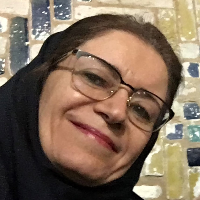Studying the effect of khavunchini on heat transfer from South facade in summer, in very hot and semi-arid climate of Khuzestan
Author(s):
Article Type:
Research/Original Article (دارای رتبه معتبر)
Abstract:
Khavunchini is a kind of extruded ornamental brick work, using brick pieces of equal thickness and different sizes and is applied as the facade of the building. These types of ornaments are found in the vernacular architecture of Khuzestan province and have been used extensively, especially in the historical part of Dezful, in entrances and parts of the inner courtyards. The motive for the present study was studying the shading effect of these patterns on the building facade. the shadow produced by Khavunchini, especially in summer, covered a considerable area of the facade. in addition to their aesthetic role, the resulting shadow patterns can be effective in reducing heat transfer from facade in summer, in very hot climate of Khuzestan. The research objective is to test the effect of these elements on heat transfer from the facade surface. In this study, with an experimental approach, two identical cubicles were constructed with the south face of brick wall, one with a Khavunchini pattern on it and the other with the same but not extruded pattern. Due to the abundance of these ornamental elements in the Dezful historical part, the desired pattern was selected from this region. Abadan was selected, as the representative of very hot and semi-arid climate of Khuzestan, for constructing the models. The reasons for this choice were the feasibility of building the models and conducting experiments in Abadan and the climatic resemblance to Dezful as a treasure trove of Khavunchini art. The variables of ambient temperature and relative humidity, temperature and relative humidity inside the cubicles and average temperature of the cubicles' south face inner surface were recorded in six measurement periods in summer 2019. the results showed that, at the hottest hours of the day, the average temperature of the south face inner surface and the indoor temperature of the cubicle with Khavunchini compared to the cubicle without it, showed an average decrease by 1 and 0.8 °C respectively. The results confirmed the positive effect of Khavunchini on heat transfer reduction from the south facade in summer in the studied climate.
Keywords:
Language:
Persian
Published:
Journal of Architecture Hot and dry climate, Volume:7 Issue: 10, 2020
Pages:
119 to 139
magiran.com/p2134229
دانلود و مطالعه متن این مقاله با یکی از روشهای زیر امکان پذیر است:
اشتراک شخصی
با عضویت و پرداخت آنلاین حق اشتراک یکساله به مبلغ 1,390,000ريال میتوانید 70 عنوان مطلب دانلود کنید!
اشتراک سازمانی
به کتابخانه دانشگاه یا محل کار خود پیشنهاد کنید تا اشتراک سازمانی این پایگاه را برای دسترسی نامحدود همه کاربران به متن مطالب تهیه نمایند!
توجه!
- حق عضویت دریافتی صرف حمایت از نشریات عضو و نگهداری، تکمیل و توسعه مگیران میشود.
- پرداخت حق اشتراک و دانلود مقالات اجازه بازنشر آن در سایر رسانههای چاپی و دیجیتال را به کاربر نمیدهد.
In order to view content subscription is required
Personal subscription
Subscribe magiran.com for 70 € euros via PayPal and download 70 articles during a year.
Organization subscription
Please contact us to subscribe your university or library for unlimited access!


